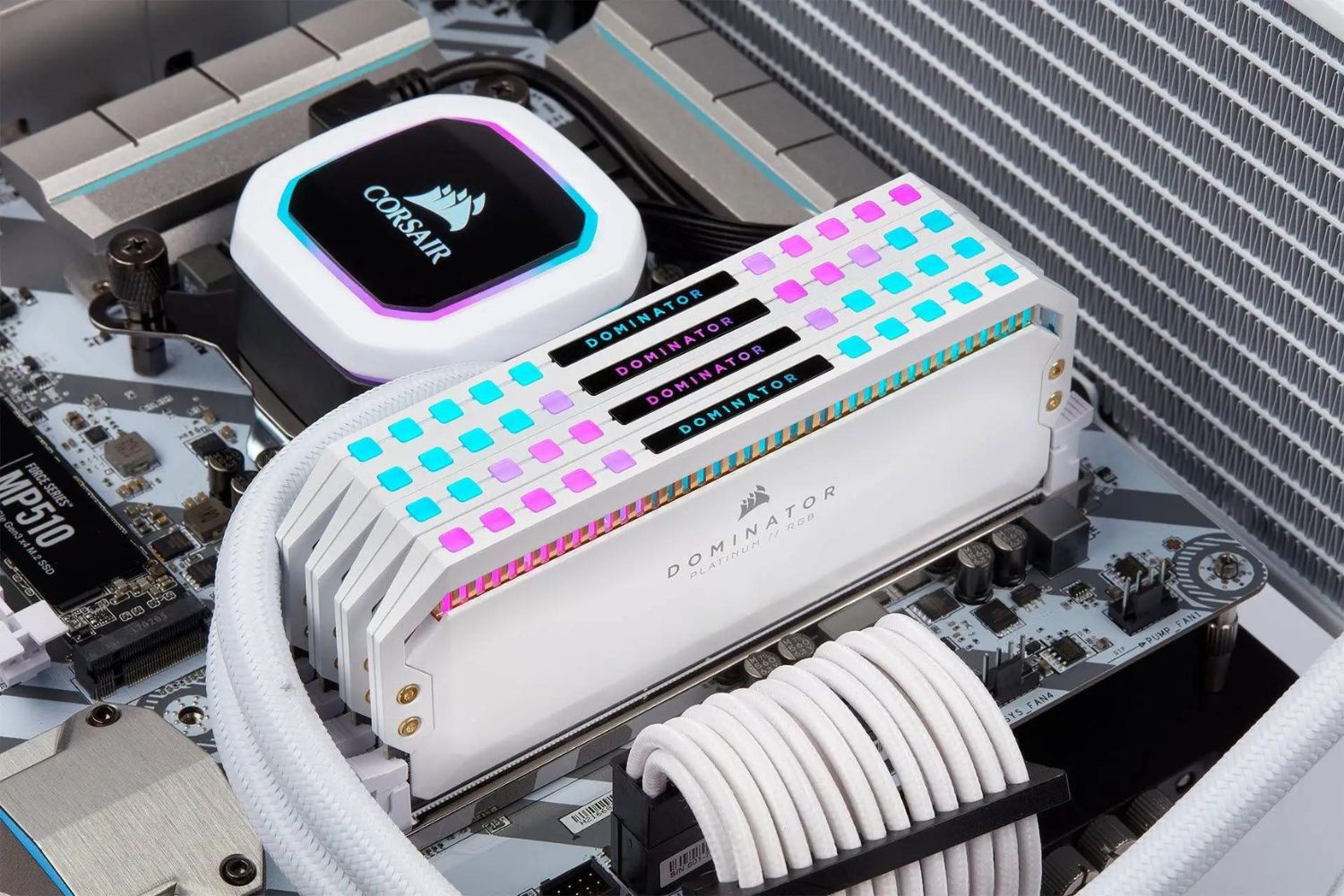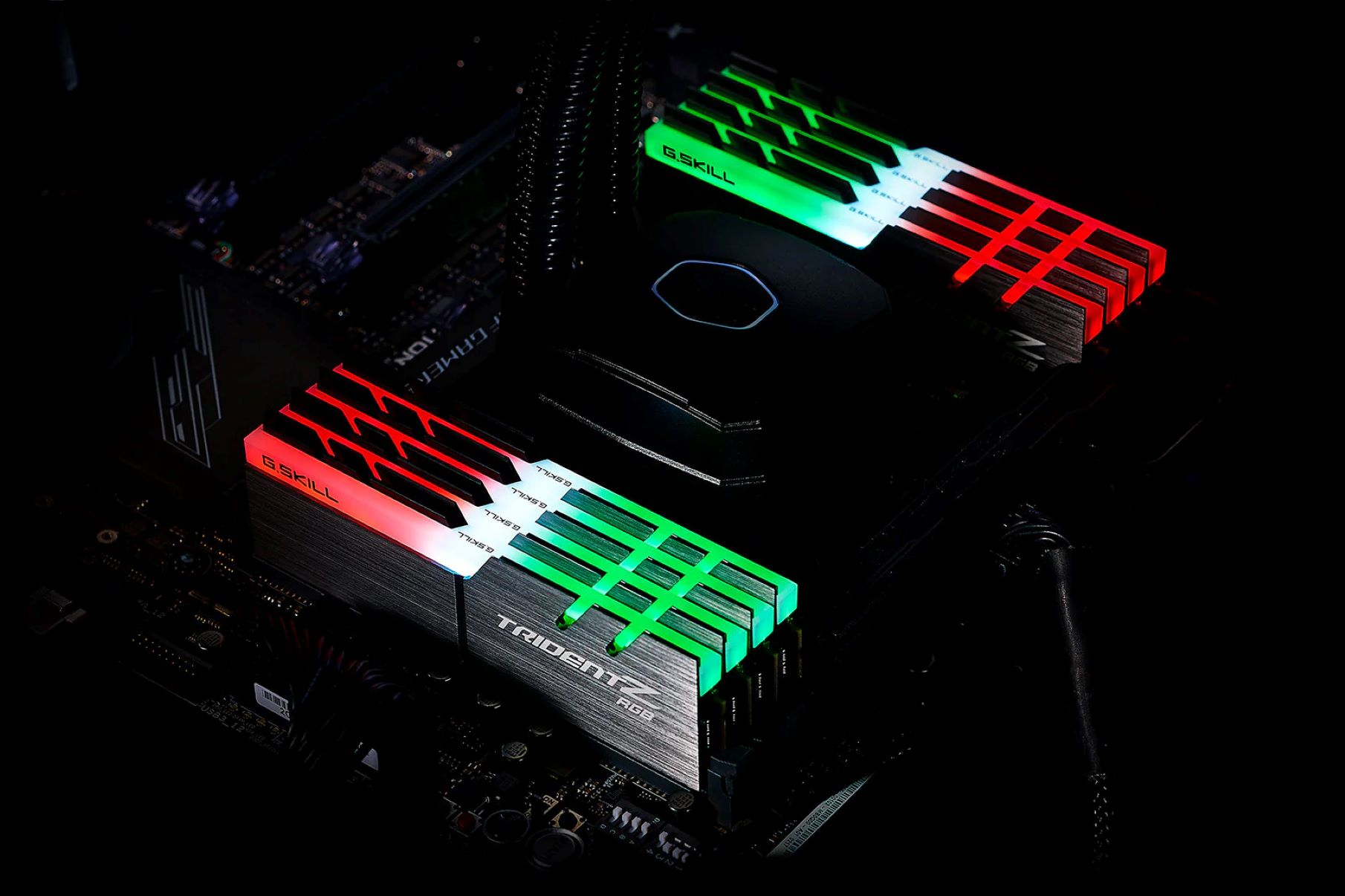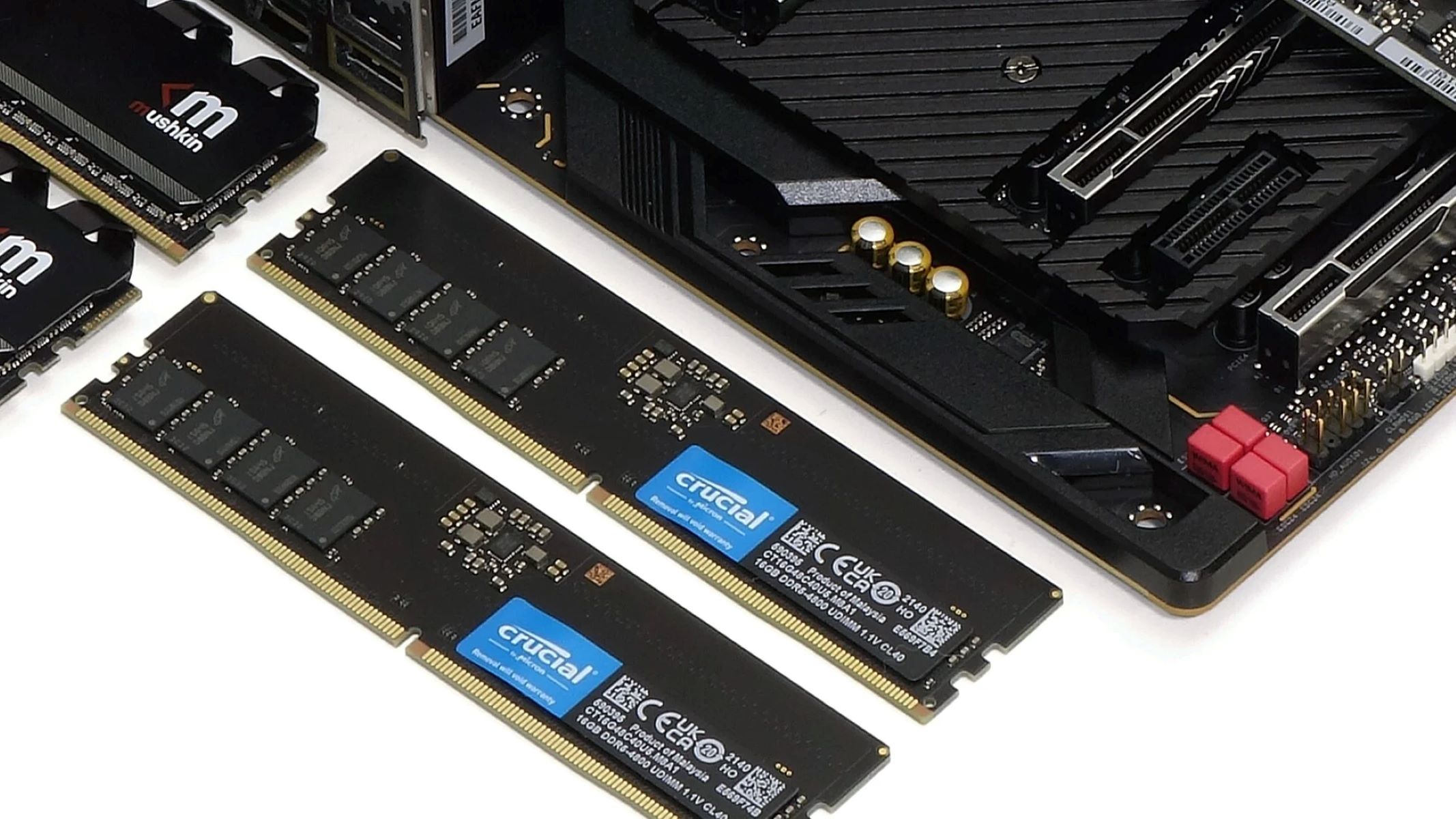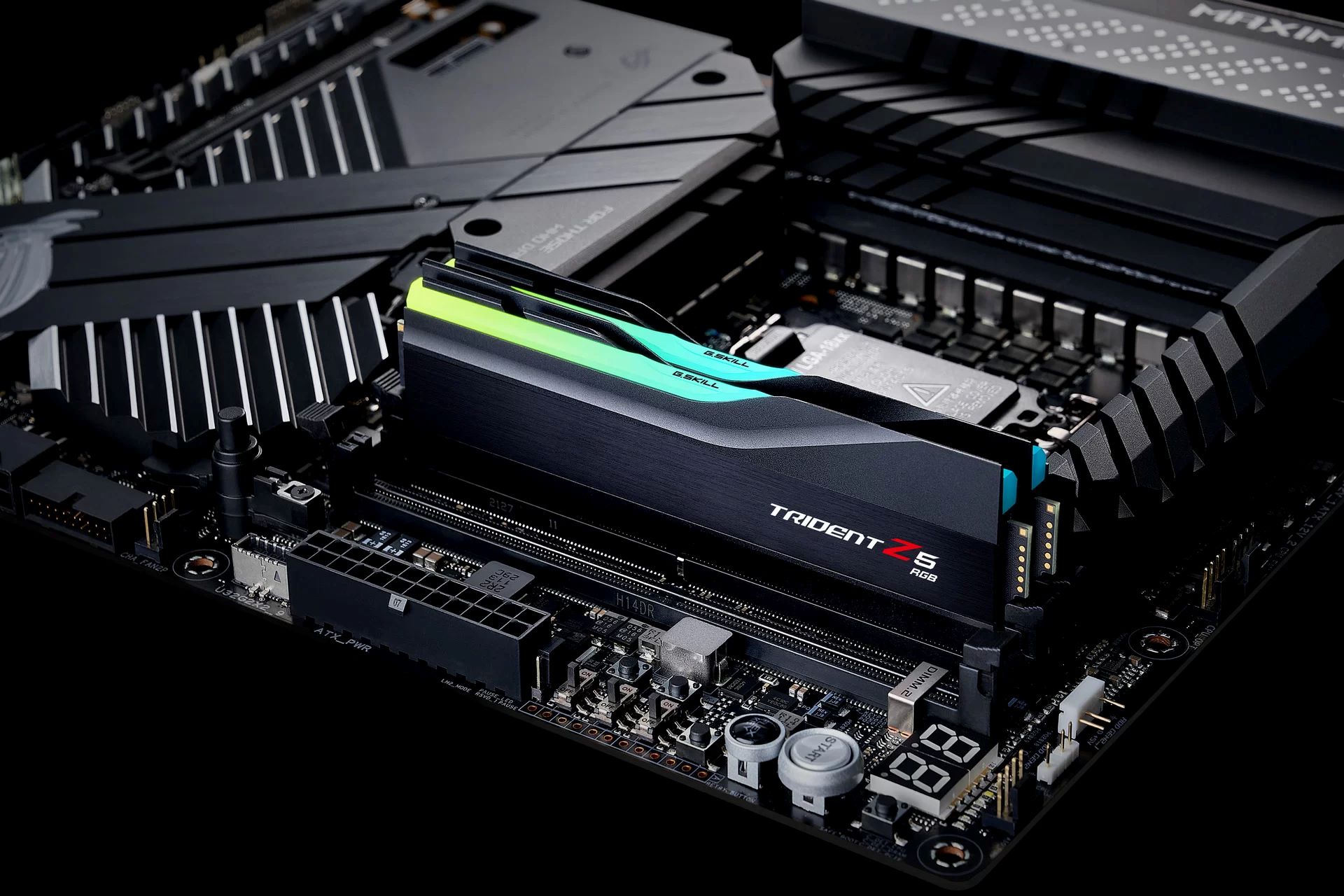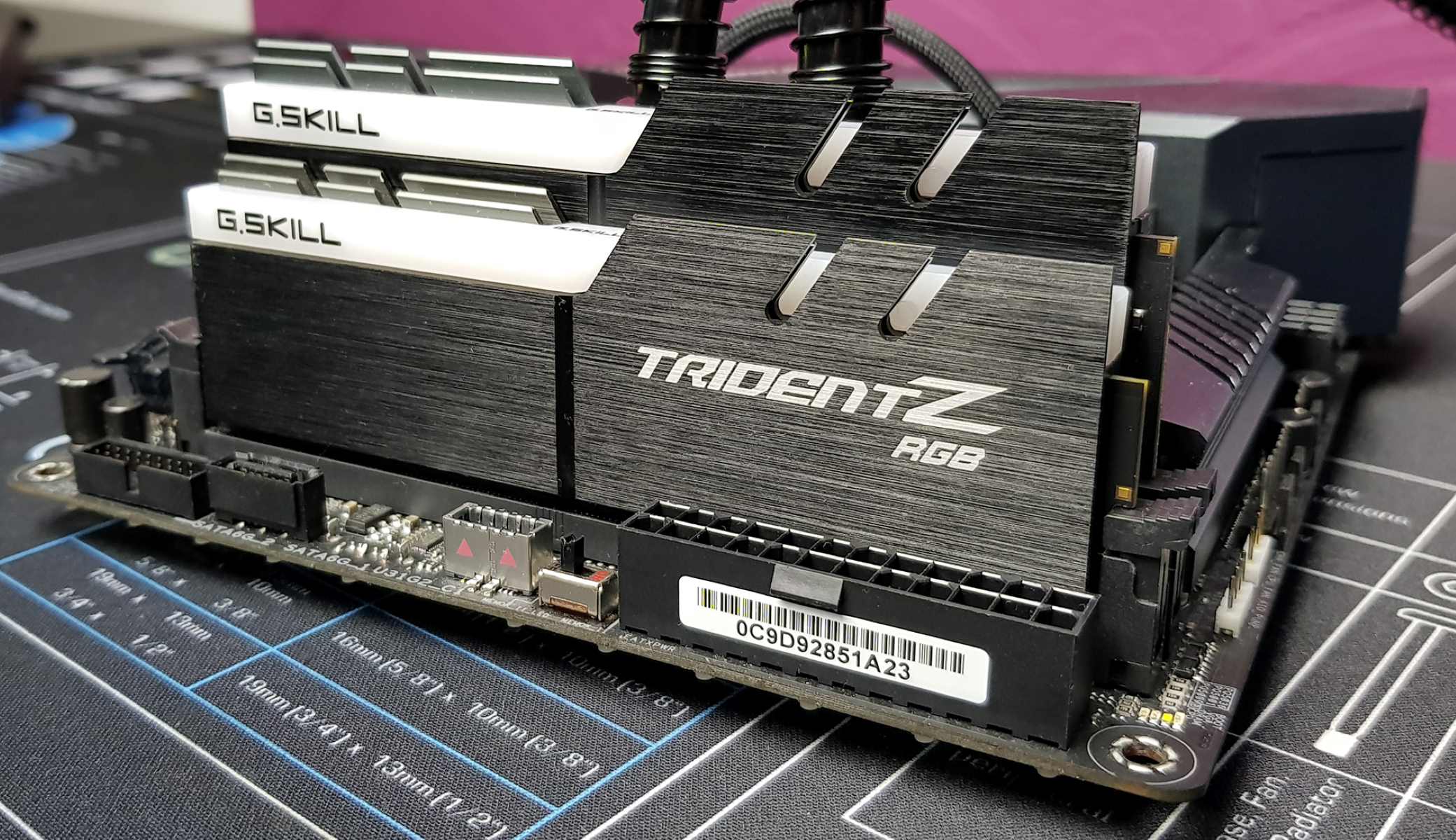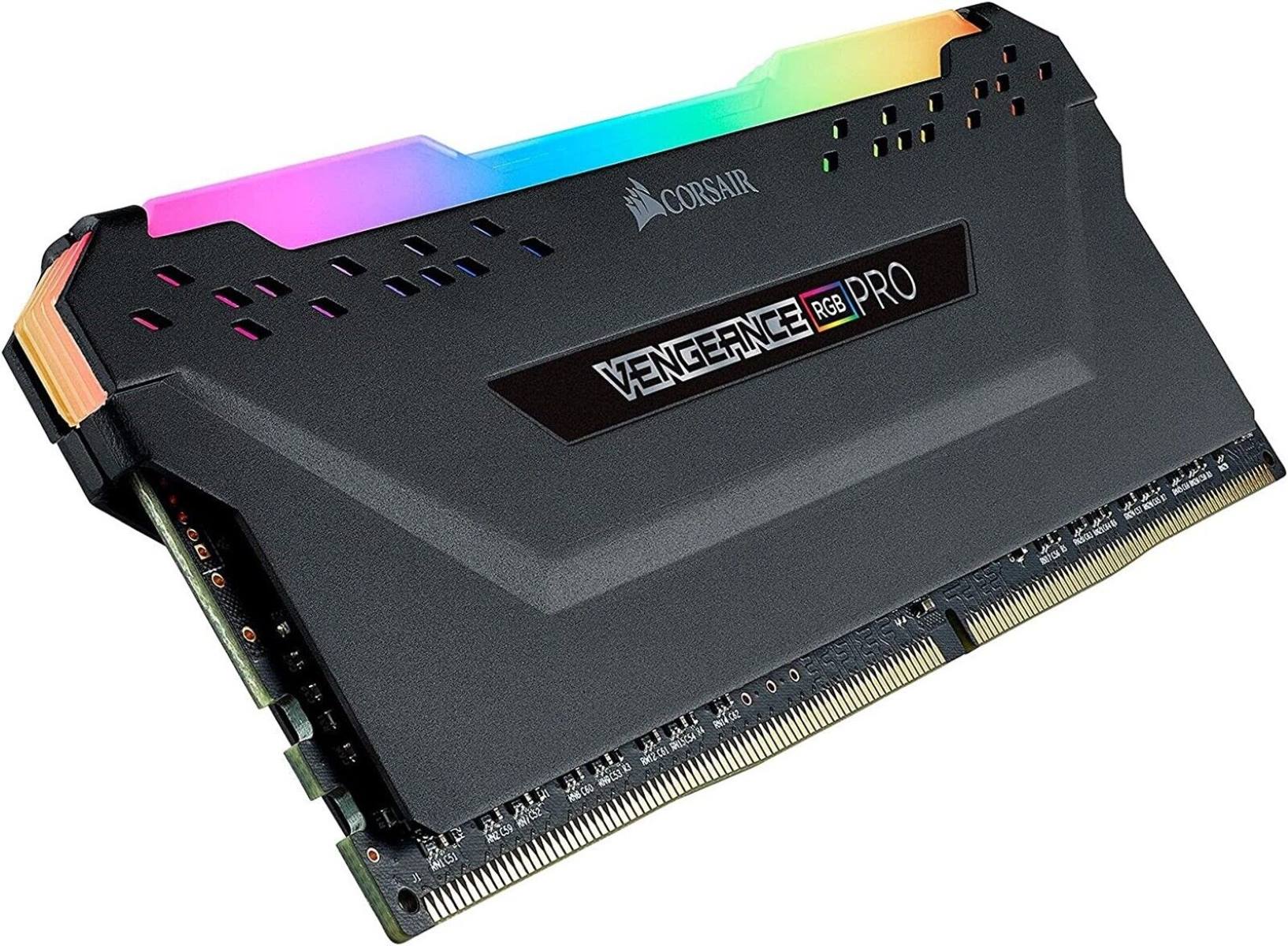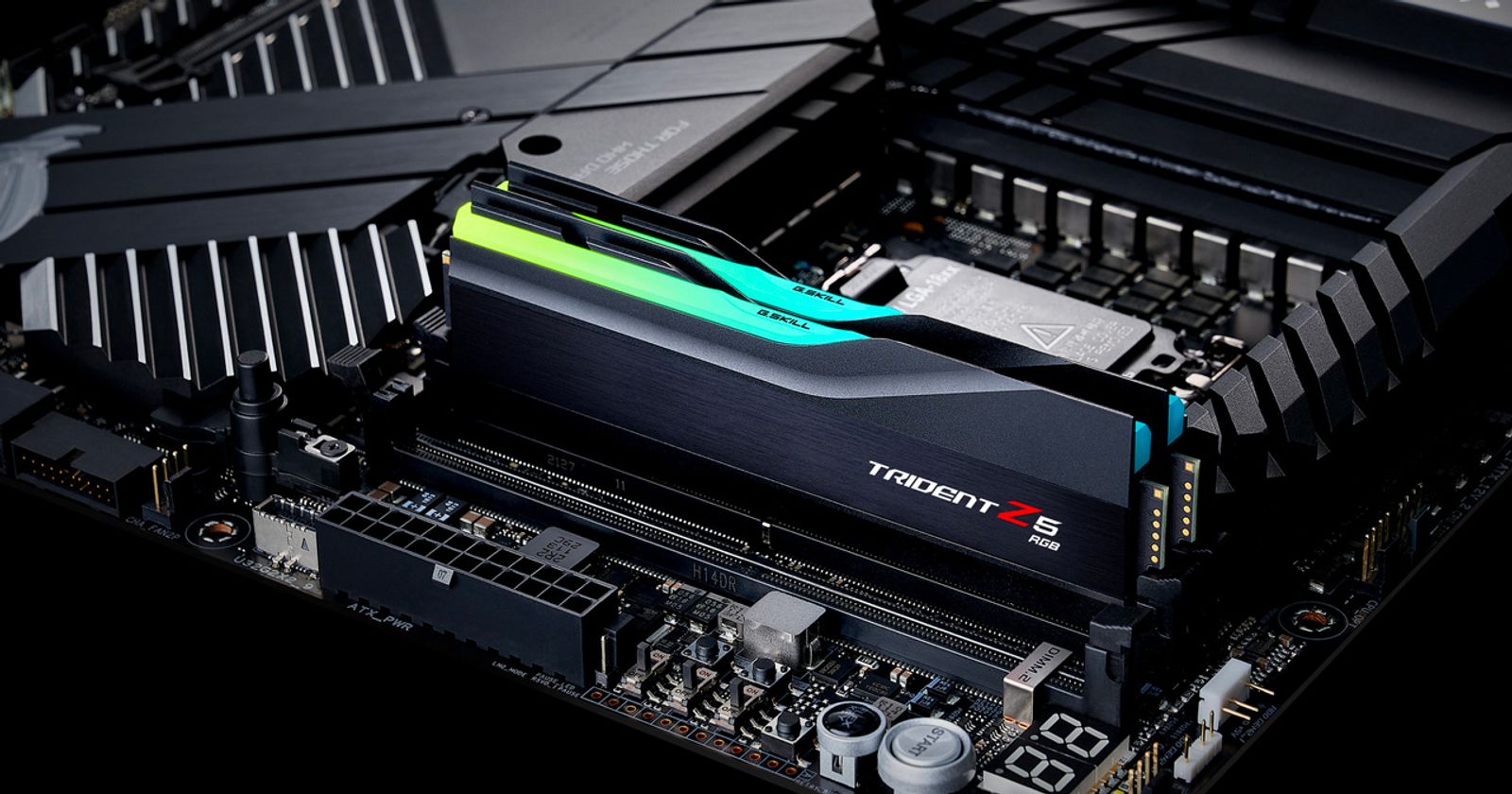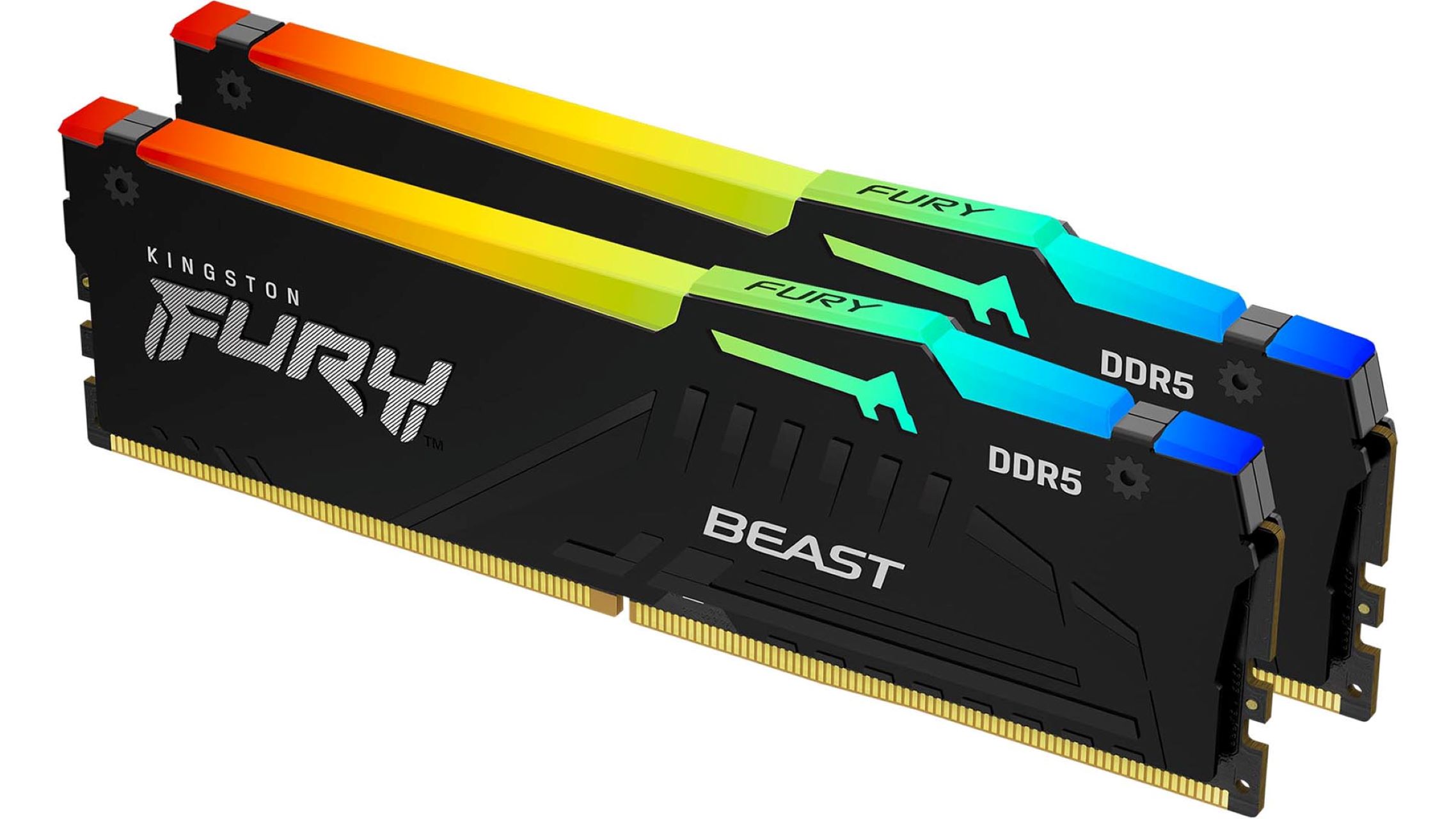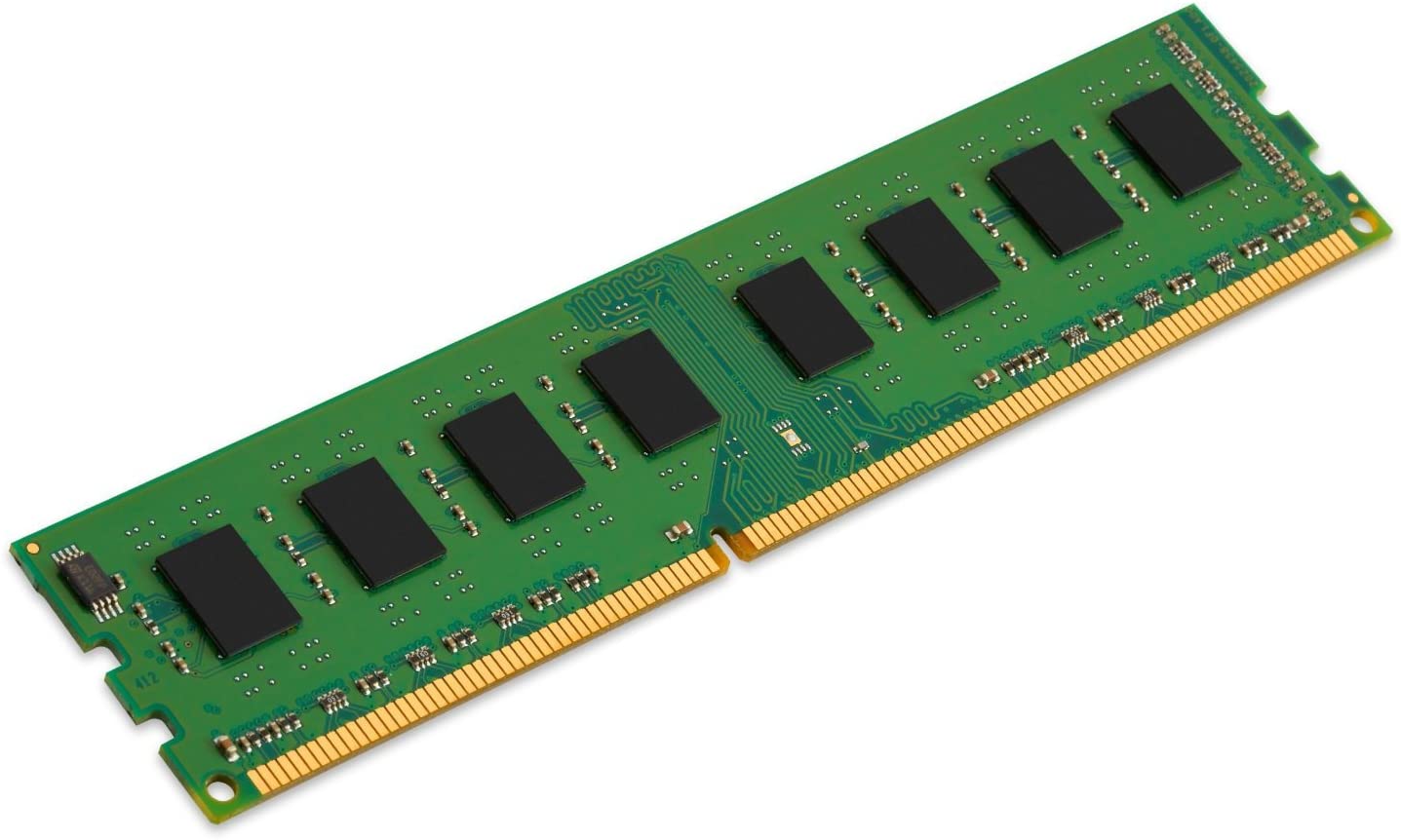Introduction
Welcome to the world of DDR5 RAM, the next generation of memory technology that promises faster speeds and improved performance for your computer system. In this article, we will delve into the world of DDR5 RAM and explore its benefits, features, and compatibility with various motherboards.
RAM, or Random Access Memory, is an integral component of every computer system. It is responsible for storing and providing quick access to data that the CPU needs to perform tasks. DDR5 RAM is the latest iteration in the DDR (Double Data Rate) series, succeeding DDR4 RAM.
With technology evolving at a rapid pace, DDR5 RAM brings several advancements that address the growing demands of modern computing. It offers higher bandwidth, increased capacity, improved power efficiency, and enhanced reliability compared to its predecessor.
As a computer enthusiast or a professional in the tech industry, understanding the benefits and features of DDR5 RAM is crucial, especially when it comes to choosing the right motherboard that supports this advanced memory technology. Choosing a compatible motherboard ensures optimal performance and the ability to fully utilize the capabilities of DDR5 RAM.
In the following sections, we will explore the advantages that DDR5 RAM brings to the table, the key features to consider for DDR5 RAM support, and finally, a list of motherboards that are compatible with DDR5 RAM. So, let’s dive deeper into the world of DDR5 RAM and discover how this new technology can elevate your computing experience.
What is DDR5 RAM?
DDR5 RAM, which stands for Double Data Rate 5 Random Access Memory, is the newest generation of memory technology for computer systems. It is the successor to DDR4 RAM and brings several improvements in terms of speed, capacity, power efficiency, and reliability.
One of the notable advancements in DDR5 RAM is its increased bandwidth. DDR5 RAM offers higher data transfer rates compared to DDR4 RAM, enabling faster communication between the RAM module and the CPU. This results in improved overall system performance, especially in tasks that require intensive data processing such as gaming, video editing, and multitasking.
Another significant feature of DDR5 RAM is its increased capacity. DDR5 RAM modules can support higher memory sizes, allowing for larger amounts of data to be stored and accessed by the CPU. This is particularly beneficial in memory-intensive applications and workloads, where having ample memory capacity helps prevent bottlenecks and improves overall system responsiveness.
DDR5 RAM also brings improvements in power efficiency. By implementing low-voltage technologies and advanced power-saving mechanisms, DDR5 RAM operates more efficiently, consuming less power than its predecessor. This not only reduces the overall energy consumption of the system but also helps in generating less heat, contributing to better system cooling and longevity.
In terms of reliability, DDR5 RAM introduces Error Correcting Code (ECC) capabilities, which detect and correct data errors during memory operations. This ensures that data integrity is maintained, minimizing the chances of system crashes or data corruption. ECC support is particularly important in critical applications, such as servers and workstations, where data accuracy and system stability are crucial.
Overall, DDR5 RAM represents a significant leap in memory technology, bringing faster speeds, increased capacity, improved power efficiency, and enhanced reliability to computer systems. Its advancements pave the way for more demanding and resource-intensive applications, providing an ideal solution for gamers, content creators, professionals, and anyone seeking a performance boost in their computing experience.
Benefits of DDR5 RAM
DDR5 RAM offers a range of benefits that significantly contribute to enhancing the performance and capabilities of computer systems. Let’s explore some of the key advantages of DDR5 RAM:
- Increased Speed: DDR5 RAM provides faster data transfer rates, allowing for quicker access to data by the CPU. This results in improved overall system performance, especially in tasks that require high bandwidth and intensive data processing.
- Higher Memory Capacity: DDR5 RAM modules support larger memory sizes, enabling users to have more memory available for running memory-intensive applications and multitasking. This increased capacity is particularly beneficial for gamers, content creators, and professionals working with resource-demanding software.
- Improved Power Efficiency: DDR5 RAM implements advanced power-saving mechanisms and low-voltage technologies, resulting in improved energy efficiency. This not only helps reduce the overall power consumption of the system but also contributes to generating less heat, ensuring better system cooling and potentially extending the lifespan of other components.
- Enhanced Reliability: DDR5 RAM introduces Error Correcting Code (ECC) support, which detects and corrects data errors during memory operations. This improves data integrity and minimizes the chances of system crashes or data corruption, making DDR5 RAM a suitable choice for critical applications, such as servers and workstations.
- Future-Proofing: By adopting DDR5 RAM, users can future-proof their computer systems, as the technology is expected to become the industry standard in the coming years. Investing in DDR5 RAM ensures compatibility with future software and applications that may require the higher performance and capacities provided by this advanced memory technology.
- Compatibility: While DDR5 RAM is not backward-compatible with older DDR4 or DDR3 slots, most modern motherboards are being designed to support DDR5 RAM. This means users can upgrade their existing systems to take advantage of DDR5 RAM without having to invest in a completely new system.
Overall, DDR5 RAM brings notable benefits in terms of speed, capacity, power efficiency, reliability, future-proofing, and compatibility, making it an ideal choice for users seeking enhanced system performance and improved capabilities for their computer systems.
Features to Consider for DDR5 RAM Support
Before upgrading to DDR5 RAM, it’s important to ensure that your motherboard supports this new memory technology. While DDR5 RAM is backward-incompatible with DDR4 and DDR3 slots, many manufacturers are releasing motherboards specifically designed to support DDR5 RAM. Here are the key features to consider when selecting a motherboard for DDR5 RAM support:
- DDR5 RAM Compatibility: First and foremost, check if the motherboard explicitly states support for DDR5 RAM. This information can usually be found in the motherboard’s specifications or product documentation. Only motherboards with DDR5 RAM support will be able to utilize the benefits and performance enhancements offered by DDR5 technology.
- Memory Slots: Take note of the number and type of memory slots available on the motherboard. Ensure that the motherboard has sufficient DDR5 RAM slots to accommodate your memory requirements. Additionally, check if the motherboard supports the memory capacity and speed that you plan to use.
- Memory Speed: DDR5 RAM modules come in different speed variants, such as DDR5-4800, DDR5-5600, or even higher. Verify that the motherboard supports the desired DDR5 RAM speed or if it has overclocking capabilities to achieve higher speeds. It’s important to choose a motherboard that can take full advantage of your DDR5 RAM’s speed capabilities.
- PCIe 5.0 Support: DDR5 RAM and PCIe 5.0 are often bundled together as the next-generation technologies. If you plan to take advantage of the latest high-speed PCIe devices, make sure the motherboard supports PCIe 5.0. This will ensure optimal performance and compatibility with future PCIe 5.0 peripherals.
- Power Delivery and Cooling: DDR5 RAM requires more power compared to its predecessors. Ensure that the motherboard has robust power delivery capabilities to provide sufficient power to the RAM modules. Additionally, consider the motherboard’s cooling features, such as heatsinks and fan headers, to maintain optimal operating temperature for DDR5 RAM.
- Overclocking Support: If you plan to overclock your DDR5 RAM for even higher performance, make sure the motherboard supports overclocking features. Look for motherboards with good VRM (Voltage Regulator Module) designs, BIOS options for fine-tuning memory settings, and adequate cooling capabilities to support stable overclocking of DDR5 RAM.
By carefully considering these features, you can select a motherboard that provides optimal support for DDR5 RAM. This ensures compatibility, stability, and the ability to fully leverage the benefits and performance improvements offered by DDR5 RAM technology.
Compatibility with DDR5 RAM
When upgrading to the latest DDR5 RAM, it is crucial to ensure compatibility with your existing computer components. While DDR5 RAM is not compatible with DDR4 or DDR3 slots, manufacturers are releasing motherboards specifically designed to support DDR5 RAM. Here are some factors to consider for DDR5 RAM compatibility:
- Motherboard Compatibility: Check if your motherboard explicitly supports DDR5 RAM. Research the specifications of your motherboard model and look for information regarding DDR5 RAM compatibility. This information can usually be found on the manufacturer’s website or product documentation.
- Motherboard Chipset: The motherboard chipset plays a vital role in determining DDR5 RAM compatibility. Look for motherboards with newer chipsets that are explicitly designed to support DDR5 RAM. Modern chipsets, such as Intel Z690 and AMD X670, are examples of chipsets compatible with DDR5 RAM.
- Memory Controller: A crucial aspect of DDR5 RAM compatibility lies in the memory controller of the CPU. Ensure that your CPU supports DDR5 RAM by checking its specifications or consulting the manufacturer’s documentation. If your existing CPU does not support DDR5 RAM, you will need to upgrade to a compatible CPU.
- BIOS Update: In some cases, a BIOS update may be required to ensure DDR5 RAM compatibility. Check the manufacturer’s website for BIOS updates that specifically mention DDR5 RAM support. Keep in mind that updating the BIOS carries some risks, so make sure to follow the manufacturer’s instructions carefully.
- Operating System Support: Verify that your operating system is compatible with DDR5 RAM. Most modern operating systems, such as Windows 10 and macOS, should work seamlessly with DDR5 RAM. However, it’s always a good idea to check for any specific requirements or updates related to DDR5 RAM support.
- Other Hardware Considerations: Apart from the motherboard and CPU, other hardware components may also have an impact on DDR5 RAM compatibility. Check if other devices such as graphics cards, storage drives, and peripherals are compatible with DDR5 technology or if any firmware updates are needed.
Ensuring compatibility between DDR5 RAM and your existing components is crucial for a successful upgrade. By taking into account the compatibility factors mentioned above, you can ensure that your computer system is ready to fully leverage the benefits and performance enhancements provided by DDR5 RAM.
Motherboards that Support DDR5 RAM
As DDR5 RAM gains popularity, motherboard manufacturers have released models specifically designed to support this new memory technology. Here are some notable motherboards that offer DDR5 RAM compatibility:
- ASUS ROG Strix Z690-E Gaming: This high-end motherboard from ASUS supports the latest DDR5 RAM modules. It features an Intel Z690 chipset, PCIe 5.0 support, ample memory slots, robust power delivery, and advanced cooling features, making it an excellent choice for gamers and enthusiasts seeking optimal DDR5 RAM performance.
- Gigabyte AORUS Master X570S: For AMD enthusiasts, the Gigabyte AORUS Master X570S is a top-tier motherboard with DDR5 RAM support. It features an AMD X570S chipset, PCIe 4.0 compatibility, high-quality components, extensive connectivity options, and reliable power delivery, making it a great choice for those looking to upgrade to DDR5 RAM.
- MSI MEG Z690 ACE: The MSI MEG Z690 ACE is a feature-packed motherboard designed for Intel’s latest CPUs and DDR5 RAM. It offers a high-end power delivery system, advanced cooling solutions, support for PCIe 5.0, extensive connectivity options, and excellent overclocking capabilities, making it suitable for demanding users and enthusiasts.
- ASRock X670 Taichi: The ASRock X670 Taichi is a premium motherboard known for its compatibility with DDR5 RAM and AMD’s latest Ryzen processors. It offers a powerful VRM design, PCIe 4.0 support, robust connectivity options, and comprehensive BIOS settings for fine-tuning memory performance, making it a solid choice for DDR5 RAM enthusiasts.
- Biostar Racing B75A DDR5: Biostar offers an affordable option with DDR5 RAM support in the form of the Racing B75A DDR5 motherboard. It features reliable power delivery, adequate connectivity options, and support for PCIe 4.0, making it a budget-friendly choice for users looking to upgrade to DDR5 RAM without breaking the bank.
These are just a few examples of DDR5 RAM-compatible motherboards available on the market. It’s important to consider your specific requirements, budget, and compatibility with other components when selecting a motherboard for DDR5 RAM support. Be sure to check the official websites of motherboard manufacturers for the latest information on DDR5 RAM compatibility and available models.
With a wide range of options available, you can find a motherboard that suits your needs and integrates seamlessly with DDR5 RAM, ensuring a future-proof upgrade for your computer system.
Conclusion
DDR5 RAM is the next generation of memory technology, offering faster speeds, increased capacity, improved power efficiency, and enhanced reliability compared to its predecessors. It provides a significant performance boost for computer systems, making it an attractive choice for gamers, content creators, professionals, and anyone seeking an upgrade for their computing experience.
In this article, we explored what DDR5 RAM is and its benefits over previous generations. We discussed the features to consider when selecting a motherboard for DDR5 RAM support, highlighting factors like compatibility, memory slots, memory speed, power delivery, and overclocking support. Additionally, we provided a list of notable motherboards that support DDR5 RAM, catering to both Intel and AMD platforms.
Upgrading to DDR5 RAM requires careful consideration of compatibility with other components such as motherboards, CPUs, and operating systems. It is crucial to check the specifications and documentation provided by the manufacturers to ensure a seamless and successful DDR5 RAM installation.
As technology continues to evolve, DDR5 RAM is expected to become the new industry standard. Its improved speeds, capacities, and energy efficiency make it a future-proof investment for those looking to stay ahead in the ever-advancing world of computing.
By understanding the benefits, features, and compatibility of DDR5 RAM, users can make informed decisions when upgrading their computer systems. Whether you are a gaming enthusiast seeking higher frame rates or a professional aiming for smoother multitasking and faster data processing, DDR5 RAM can unlock the full potential of your computer.
Stay updated with the latest developments in DDR5 RAM and keep an eye out for new motherboard models that offer DDR5 RAM support. With the right combination of DDR5 RAM and a compatible motherboard, you can take your computing experience to new heights.







